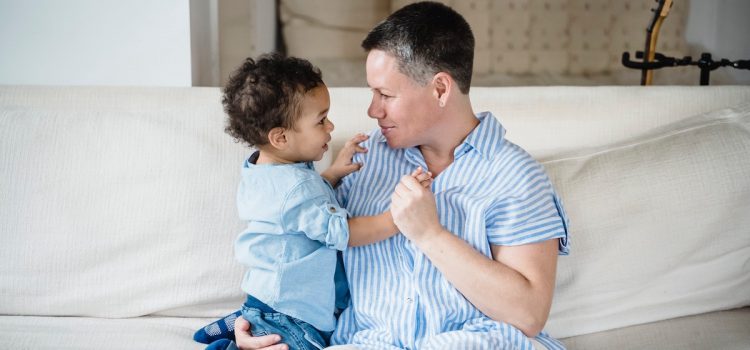

This article is an excerpt from the Shortform book guide to "The Explosive Child" by Ross Greene. Shortform has the world's best summaries and analyses of books you should be reading.
Like this article? Sign up for a free trial here.
What is perspective-taking in psychology? Why is it important to see things from your child’s point of view?
In The Explosive Child, Ross Greene claims that asking for your child’s perspective on challenges and outbursts they’re having will help them process their feelings and behavior. This is called perspective-taking, psychology’s great solution for fixing bad behavior.
Find out how to use your child’s perspective to correct tantrums.
Getting Your Child’s Perspective
Greene says you can discuss practical challenges with your child beginning with the ones that cause the most outbursts or conflicts. Your goal in these conversations is to understand your child’s perspective on their practical challenges and outbursts, also known as perspective-taking. Psychology and Greene acknowledge this isn’t always an easy process—kids often don’t fully understand their own feelings, and they might resist talking about their behavior—but by approaching your child openly and working with them, you’ll eventually discover the causes of their outbursts.
(Shortform note: Instead of just asking your child what causes their outbursts, some parenting experts suggest you also keep track of your child’s behaviors leading up to an outburst. By taking the initiative and paying attention to when and where outbursts occur, you’ll learn important information about your child’s behaviors. This information may then reveal productive starting points for your discussions.)
Greene offers two guidelines for conducting these discussions with your child:
1) Ask Specific Questions
Greene explains that your questioning throughout the discussion should focus on the specific circumstances behind practical challenges—allowing you to change or avoid these circumstances later on, preventing outbursts. To do this, ask your child a lot of what, who, where, and when questions, like: What is challenging or frustrating? Who makes you upset? Where and when do you tend to get upset? What were you thinking about in the moments leading to the outburst? For example, Liz’s dad asks what Liz doesn’t like about getting up in the morning or when she finds it easier or harder to get up.
| Circumstance, Thought, and Then Action Though it might seem like the circumstances of a practical challenge directly cause your child’s outbursts, there’s more going on than first appears. These circumstances, also known as behavioral triggers, are actually connected to specific ways of thinking rather than specific ways of acting. These thoughts are the “middle step” between specific circumstances and your child’s responses to them. For example, Liz encounters the behavioral trigger of waking up early. She associates this event with a specific way of thinking: “I hate getting up in the morning. I shouldn’t have to.” Then, when she’s told to get up, she automatically starts thinking about how unfair that is, works herself up into a rage, and has an outburst. This middle step, a thought pattern, is crucial for understanding why outbursts happen—if a child can recollect what they were thinking just before an outburst, you can understand the chain of events leading to their behavior. Plus, if you’re able to find a way to interrupt your child’s negative thought pattern (through coping methods like breathing exercises, for example), then they won’t progress to the next step of having an outburst even in the face of a behavioral trigger. |
2) Practice Active Listening
While getting your child’s perspective, you’ll want to keep your child as open and communicative as possible so they feel comfortable talking with you. To this end, Greene suggests you actively listen to your child, making them the focus of the conversation. He offers several conversational dos and don’ts for active listening:
- Do repeat your child’s answers back to them to make sure you understand them correctly.
- Do ask clarifying questions like “What do you mean?” or “How so?” when you don’t understand something.
- Don’t bring up problem behaviors, as doing so might make your child defensive and closed off.
- Don’t guess what your child is feeling or why they acted a certain way—you don’t want to speak over them and deprive them of an opportunity to explain themself.
- Don’t offer solutions yet, as this will come later.
Nonverbal Cues and Active Listening
Psychologists suggest there are several more crucial components to active listening, many of which have less to do with what you say and more to do with how you act. They advise that you also:
- Pay attention to your body language. Sometimes, our movements can say something we don’t intend. To show you’re engaged and interested in what the other person has to say, try to smile, avoid folding your arms, and nod regularly.
- Keep up eye contact. This allows you to show your conversation partner that you’re engaged with them and aren’t distracted by anything else.
- Don’t cut off your conversation partner. Even if there’s a period of silence while they consider what to say, you should be patient and wait for them to continue. This makes it easier for them to complete their thoughts and also shows you aren’t getting bored with what they have to say.

———End of Preview———
Like what you just read? Read the rest of the world's best book summary and analysis of Ross Greene's "The Explosive Child" at Shortform.
Here's what you'll find in our full The Explosive Child summary:
- How to get your life back when you have a child with behavioral problems
- Common myths about the causes of outbursts and why they really happen
- Why prevention is key for addressing long-term behavioral issues






